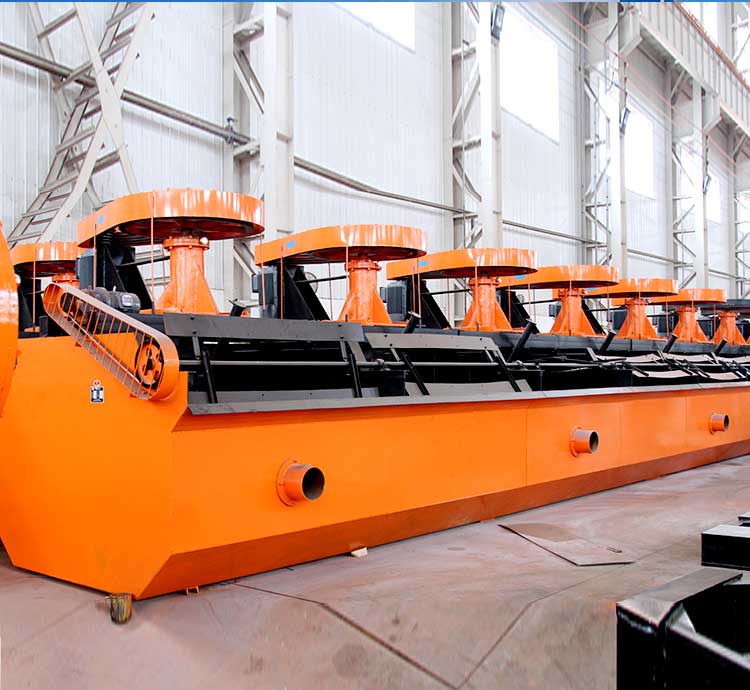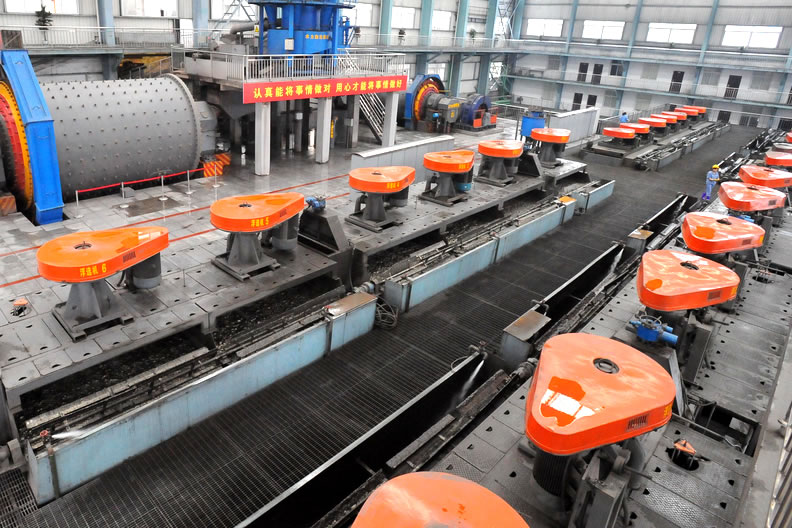
Processing ability: 0.18–20 m³/min
Rotation speed: 191–400 r/min
Applied material: non-ferrous metals, ferrous metals, precious metals, non-metallic mineral, chemical raw materials, etc
Flotation Machine (also called Flotation separator) is applicable for the separation of nonferrous metal and ferrous metal, such as fluorite and talc, Handling Materials:quartz, gold, silver, copper and iron ore etc., non-ferrous metals, ferrous metals, coal, fluorite, talc, lead, zinc, molybdenum, aluminium ore and other metal ores.

1. It costs less to run: Compared with conventional mechanical agitation flotation machines, it can save 1/3~1/2 of electricity.
2. High sorting accuracy and low ash content of clean coal: The ash content of clean coal can be reduced by 1~2% compared with conventional mechanical stirring flotation machines.
3. Good flotation effect: It is equipped with automatic liquid level control and electronic control device, which has a high degree of foam refinement, thus improving the flotation effect.
4. Wear parts are highly durable: The impeller is always active in the machine, which plays a role in removing accumulated materials and debris, reducing damage to components due to debris; and the impeller of the mixing device is made of ground rubber, which enhances wear resistance.

When flotation machine works, slurry is inhaled from the bottom of the trough to the space between impellers. Meanwhile, the low pressure air sent by fan is sent to this area through the air distributor in the hollow shaft. After sufficient mixing, the slurry is pushed out by the impeller, and then goes to the whole trough. When the froth rises to the stable level, after the enrichment processing, froth overflows to the froth trough from the overflow weir. Another part of ore slurry flows to lower part of impeller for the remixing with air. The remaining slurry flows to the next trough until it becomes residue.
| Specification Model |
Effective cubage (m³) |
Processing capacity (m³/min) |
| XJK-0.35 | 0.35 | 0.18-0.4 |
| XJK-0.62 | 0.62 | 0.3-0.9 |
| XJK-1.1 | 1.1 | 0.6-1.6 |
| XJK-2.8 | 2.8 | 1.5-3.5 |
| XJK-5.8 | 5.8 | 5-7 |
| SF-0.37 | 0.37 | 0.2-0.4 |
| SF-0.7 | 0.7 | 0.3-0.9 |
| SF-1.2 | 1.2 | 0.6-1.6 |
| SF-2.8 | 2.8 | 1.5-3.5 |
| SF-4 | 4 | 2-4 |
| SF-8 | 8 | 4-8 |
| SF-10 | 10 | 5-10 |
| SF-20 | 20 | 5-20 |
| JJF-2 | 2 | 1-3 |
| JJF-4 | 4 | 2-4 |
| JJF-8 | 8 | 4-8 |
| JJF-10 | 10 | 5-10 |
| JJF-16 | 16 | 5-16 |
| JJF-20 | 20 | 5-20 |
Please fill in the form below or inquiry online to get price & service or email us at sell@hxjq.com.